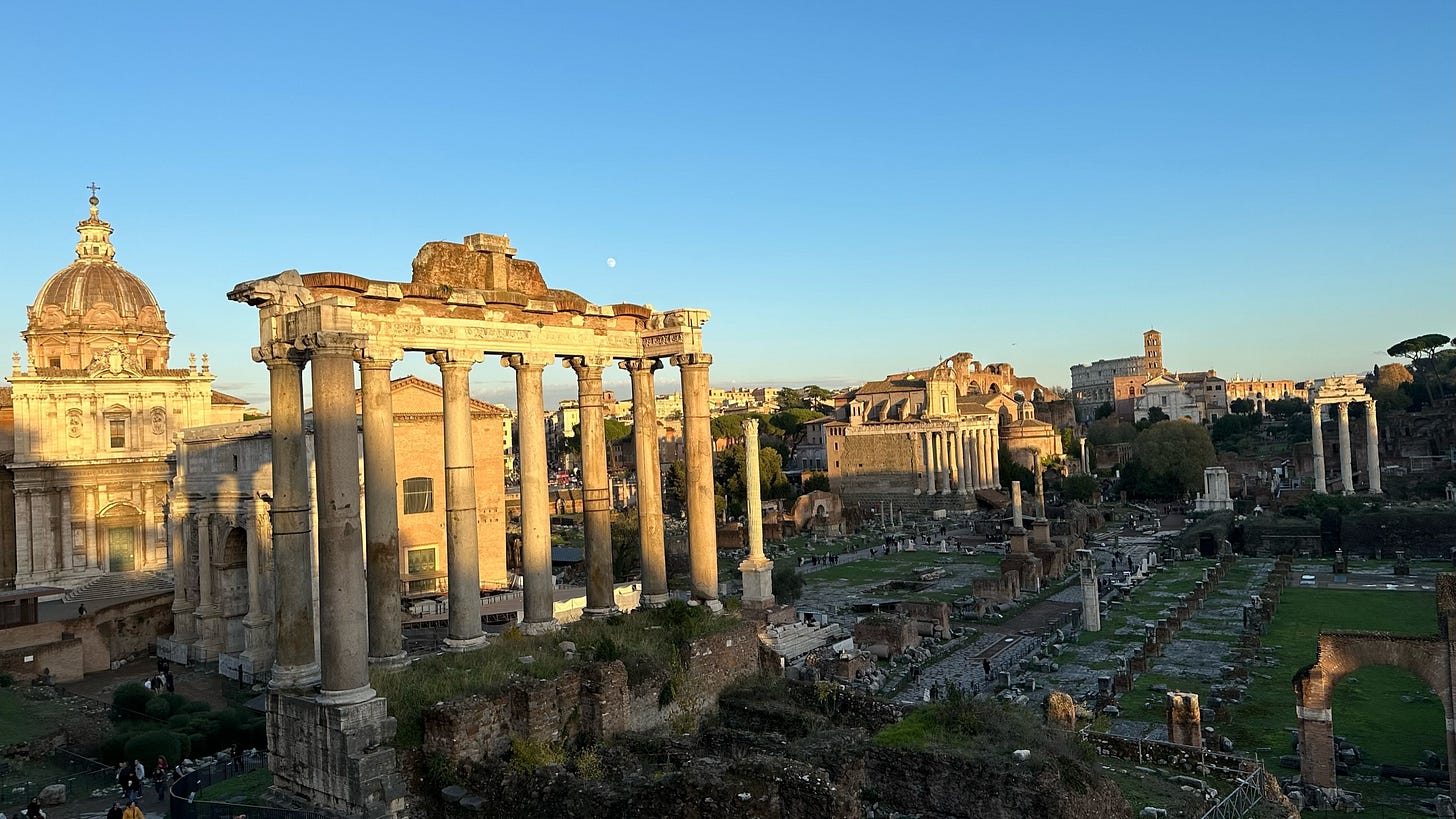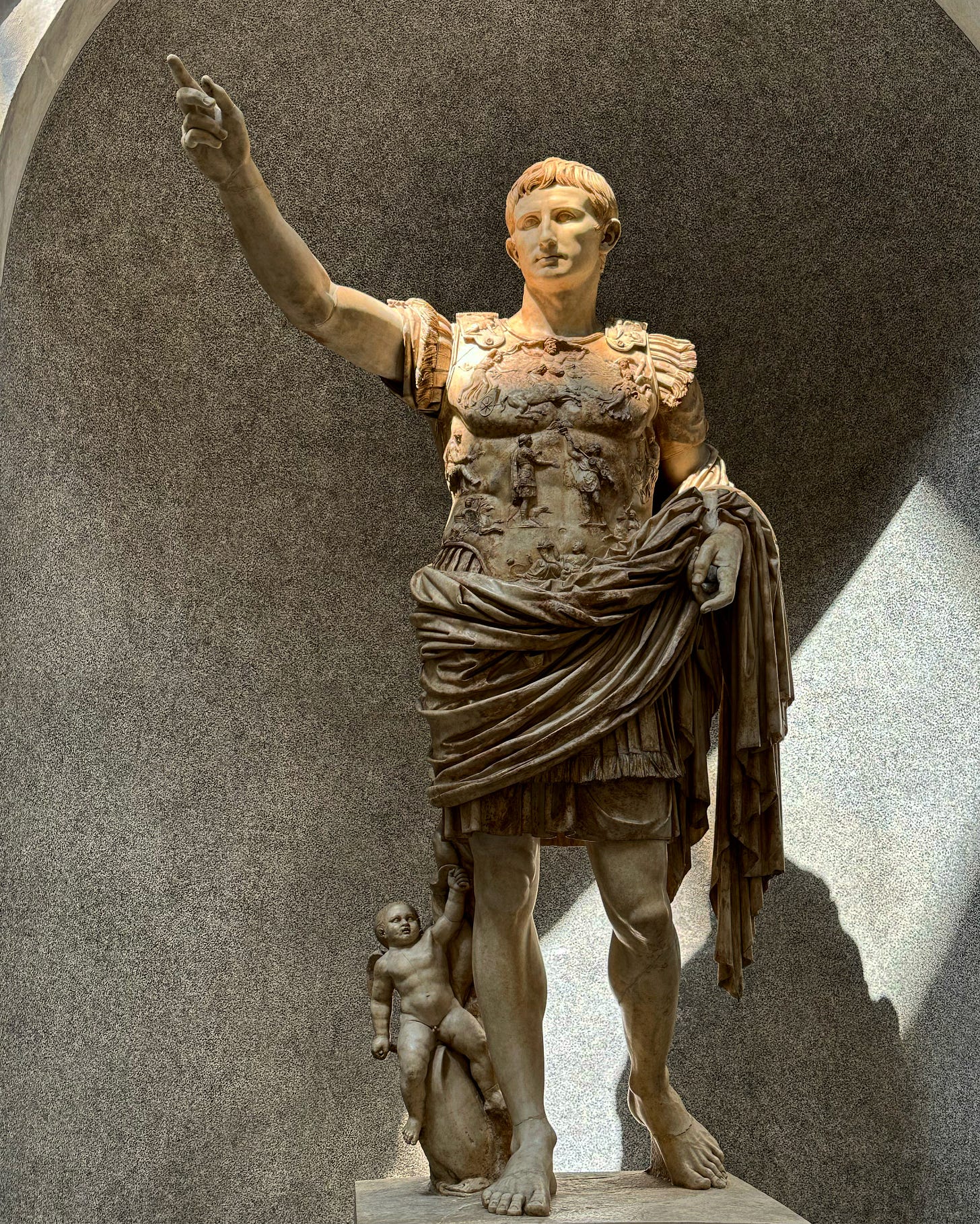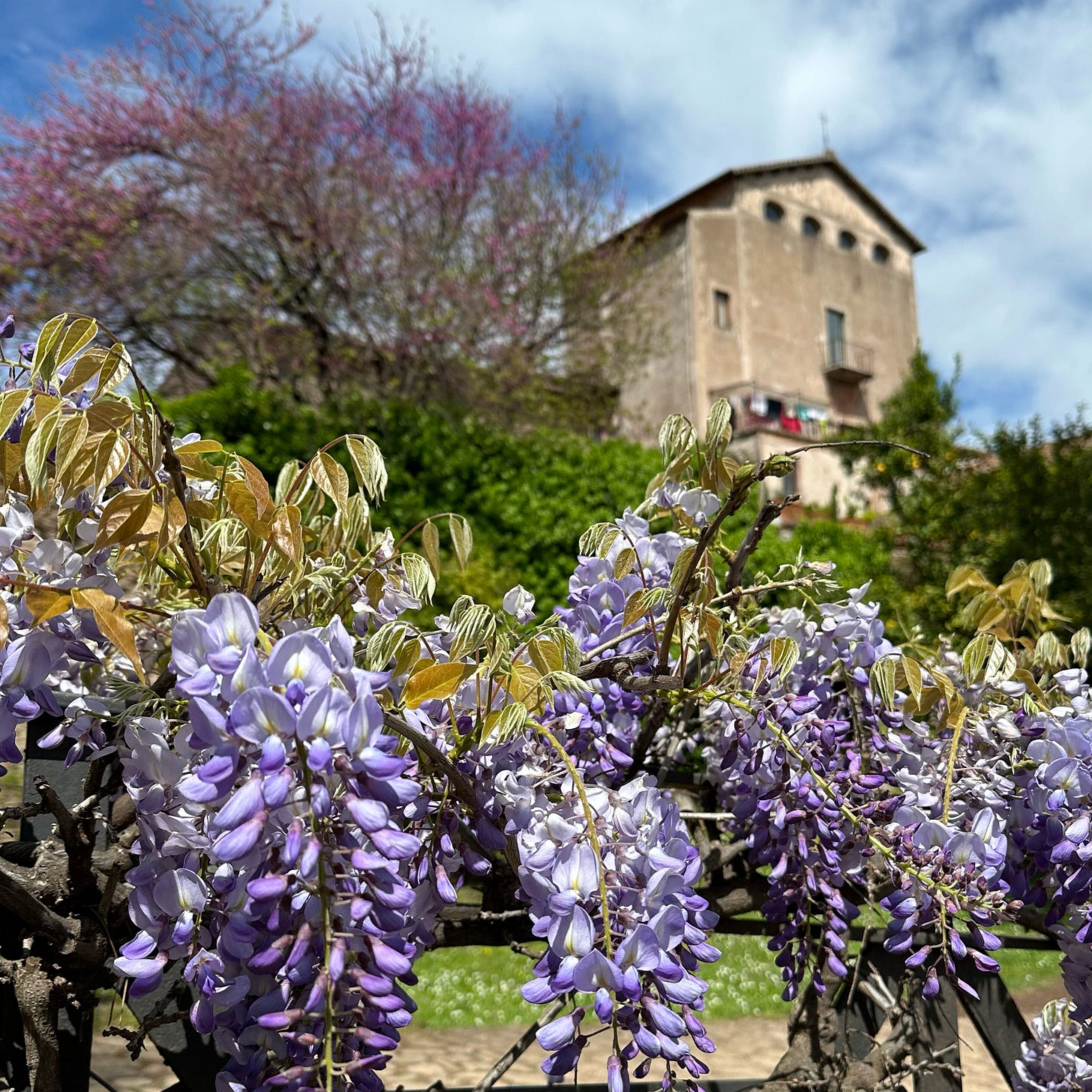Today is Rome’s birthday. On the 21st April, 753 BCE (which I think we can agree is very specific for a legend), the city was founded by her first king, Romulus. He and his brother Remus, were twin sons of Mars and the Vestal Virgin, Rhea Silvia.

She was the princess of Albalonga, believed to have been more or less where the papal summer residence is now at Castelgandolfo on the edge of Lake Albano (the photo below is, in fact, neighbouring Lake Nemi which is much moodier). The throne of Albalonga had been stripped from Rhea Silvia’s father by his dastardly brother. The only member of her family to be spared, she was forced to become a priestess in the cult of Vesta, to avoid any troublesome kingdom-reclaiming heirs. However Mars, god of war, had other ideas and she bore his twin sons who were swiftly (but inefficiently) abandoned in the river by the henchmen of the evil uncle.
They washed up in an inlet of the Tiber and were found and suckled by a she-wolf (legends do not, after all, require nutritional plausibility), and grew up to feud for the control of hills overlooking the (once) fordable section of the Tiber. Divine will, babies in baskets in rivers, fratricide; tales as old as the hills. There are, after all, only so many stories: they tend to repeat themselves.
An excellently gritty (and indeed muddy) version of the story is recounted in the 2019 film Il Primo Re. Made with a low budget and with (subtitled) dialogue in archaic Latin, it is a fantastically improbable and admirable project. We saw it at our neighbourhood cinema and loved it.
The version of the story that we all know, however, is that written by Livy for Augustus (seen above at the Vatican Museums two days ago). It was an integral part of the spectacular multi-media campaign of spin which underpinned the divine right to rule of Rome’s first emperor, hailed as the New Romulus. Religion, poetry, art, portraiture, legend, history, genealogy, and geography were all harnessed with extraordinary skill to emphasise the inevitability, and the divine ordinance, of Augustus’ rule. He built his residence amid the houses of the swishest area of Rome, atop the Palatine Hill, close to where it was (is) believed that Romulus founded his settlement in what, even for Augustus, was an ancient past.
To think of Augustus’ exploitation of the legend of the city’s foundation as a purely cynical move is, however, to miss the point a little. Rome has always been obsessed with its own origins, and with the genius loci—the spirit of the place. Though these elusive origins may lurk in the distant and shifting mists of hazy legend, they nevertheless also underpin the very tangible palimpsest of over a millennium of concrete, brick, and marble of the multiple rebuildings of the Palatine Hill. Whether or not Romulus actually existed is far less important than the fact that the Romans believed he did. All of the eminently solid grand monuments we see today are built on those shifting quicksands of legend.
Auguri, Roma! ❤️








I love the back-story, which I know is history but it sounds so much more intriguing. I tried watching Il Primo Re when it first came out and finally turned it off because of the latin (and also because I kept seeing actress Vanessa Scalera as Imma Tataranni....
I wonder if you are interested in reading an article by Ingrid D. Rowland entitled "Mysteries of Use and Reuse" from the NYRB. She also visited the show you saw in Milan.